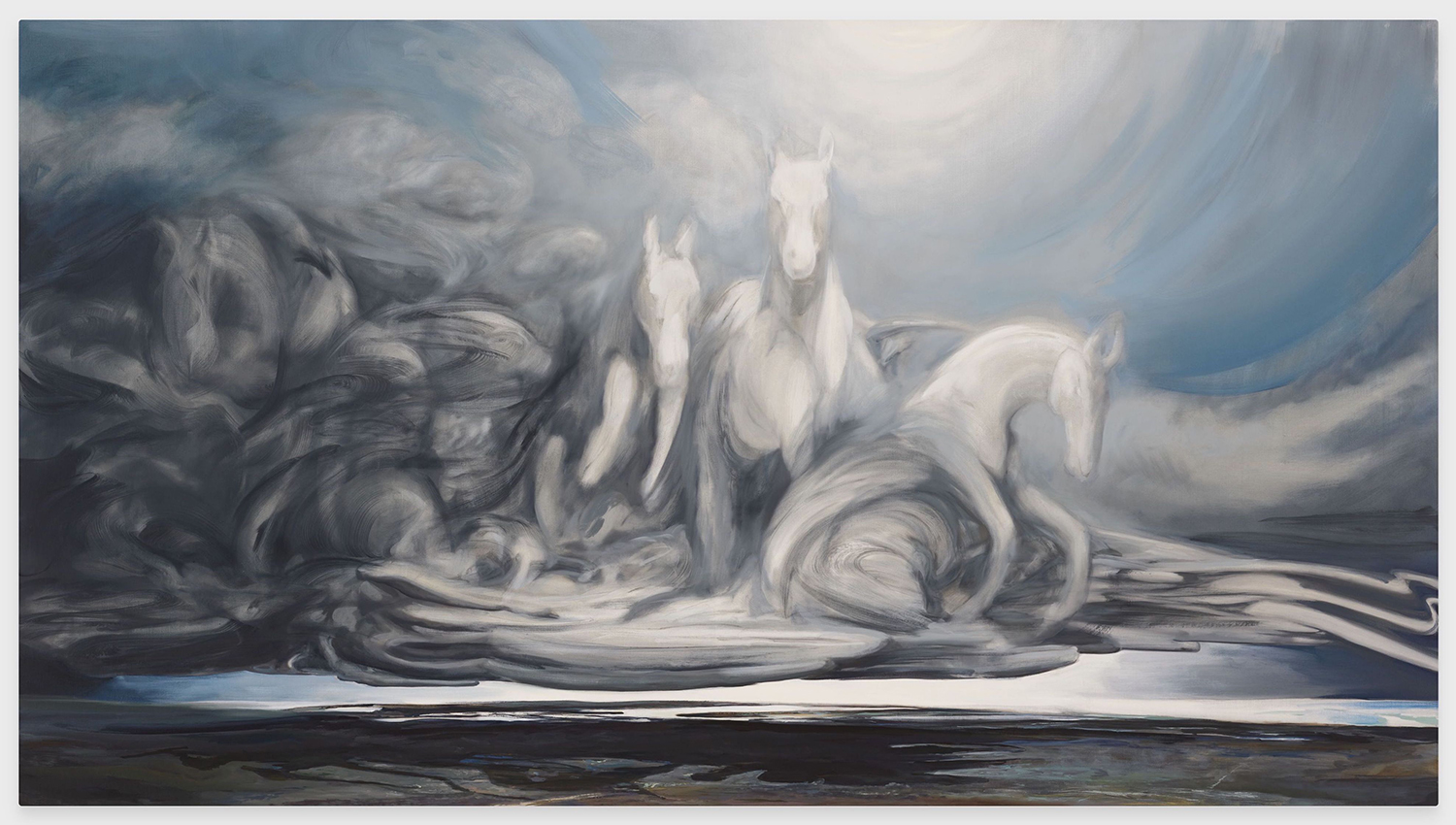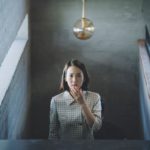Maka Panau / Tinea Vesicolor
2005 - Painting (Painting)
Shooshie Sulaiman
Shooshie Sulaiman’s pictures of unidentified figures initially appear alien and even monstrous: rendered hairless in unusual and even sickly colors, they stand in stark contrast to the aesthetic ideals of conventional portraiture. The green acrylic paint used for the subject’s skin in Maka Panau / Tinea Vesicolor (2005), for example, evokes cultural associations between phenotype and diseases such as hypochromic anemia, a blood-related illness historically diagnosed by the green-hued tone it produced in a patient’s pallor. Staring at the viewer a forlorn gaze, Sulaiman’s subject appears caught in a distressingly static state, at once both uncomfortable and yet incapable of ameliorating his condition. Sulaiman’s paintings, on many levels, foreground bodies as vulnerable sites: in Maka Panau / Tinea Vesicolor (2005), the visual cues for disease also bring out associations of dirtiness and shame as read through “observable” symptoms. At the same time, her work also responds to contemporary practices that privilege branding and commerce over creative originality. Sulaiman’s work effectively translates psychological anxieties endemic to nation building traumas in contemporary Malaysia, the result of a nascent free market economy and its social effects. Her commitment to analog technique represents a decisive injunction against the mass-produced that gestures towards freer expressiveness through artistic practice.
Shooshie Sulaiman is one of the leading creative practitioners in Southeast Asia. Her work develops in various forms, from site-specific installations and outdoor performances, to a daily practice of writing and drawing. She started her artistic practice during the 1990’s, when Malaysia opened to the free market and became more international, not without psychological impact on its society. Thus, her work can be perceived as a precious testimony of what the country went through, an emotional landscape of what happened politically and socially during that time.
Colors:
Related works sharing similar palette

© » GALERIE MAGAZINE
9 Must-See Artworks at Art Basel Miami Beach - Galerie Subscribe Art + Culture Interiors Style + Design Emerging Artists Discoveries Artist Guide More Creative Minds Life Imitates Art Real estate Events Video Galerie House of Art and Design Subscribe About Press Advertising Contact Us Follow Galerie Sign up to receive our newsletter Subscribe Art Basel Miami Beach...

© » KADIST
Tony Cokes
2022Tony Cokes’s long-form, multi-channel work Some Munich Moments 1937–1972 forms a layered montage of historical and contemporary source material exploring different periods of Munich’s history...

© » KADIST
Chen Zhexiang
2021In the video work Any Resemblance is Coincidental , CHEN Zhexiang mined portraits of real Asian criminals that were abandoned on the Internet...

© » KADIST
Wong Wai Yin
2021Drawn from the widely circulated images of protests around the world in support of women rights and racial equality, the phrase I can’t believe we are still protesting is both the title of Wong Wai Yin’s photographic series and a reference to similar messages seen on protest signages...

© » KADIST
Karthik Pandian
2012Filmed in Morocco, the film Atlas by Karthik Pandian continues his investigation into history, site and monument...

© » KADIST
Leticia Ramos
2021Leticia Ramos’s film DROPSPIKE is the second of a five-part film project entitled STORIES OF THE END OF THE WORLD ...

© » ARTS EQUATOR
SEE WHAT SEE: BOYS' LOVE (BL) DRAMAS | ArtsEquator Thinking and Talking about Arts and Culture in Southeast Asia ArtsEquator Viewpoints November 13, 2021 By Lainie Yeoh I grew up in an era where queer films were rare exceptions and it was your holy gay-af duty to watch all the ones you could access...

© » ARTS EQUATOR
The top ArtsEquator articles of 2020 | ArtsEquator Thinking and Talking about Arts and Culture in Southeast Asia Articles NEON December 31, 2020 Below is a list of the top 10 ArtsEquator articles in 2020, in random order: An Elder Millennial’s Guide to Classic Singapore TV & Movies by Joel Tan Published on: 20 Aug 2020 “Purists are undecided on when exactly Singapore TV died, but I think 2007, when Phua Chu Kang wrapped, and 2015, when Tanglin started, might be a good gauge...

© » KADIST
Nick Mauss
2015As in other Mauss’ works that often look unfinished, the drawings in Untitled seem ever at the phase of the sketch, his segments as if they may uproot and reorient themselves at any moment...

© » KADIST
Clarissa Tossin
2017Clarissa Tossin’s film Ch’u Mayaa responds to Frank Lloyd Wright’s Hollyhock House (constructed 1919–21) in Los Angeles, an example of Mayan Revival architecture...










